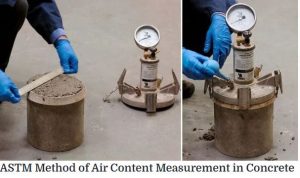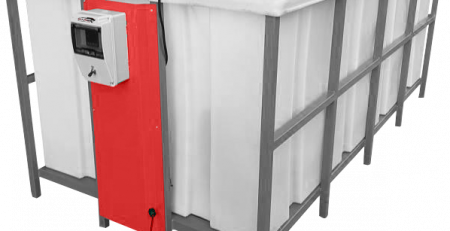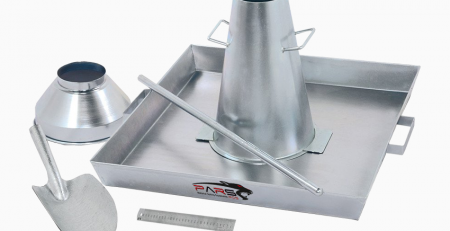Measurement of Air Content in Concrete
AIR CONTENT METER
Air content of concrete is measured by the pressure air measurement method which is based on the principles of The Boyle's law.
The Boyle's law states that the volume of the gas is inversely proportional to the pressure.
By the application of pressure on a concrete of known volume (that consist of air voids), compression takes place which results in the reduction of the volume.
This volume change is measured and related to the original initial volume.
The difference between original and reduced volume of concrete provides the air content in concrete.
The following test was first applied by Klein and Walker in 1946. Menzel was the person who refined the apparatus and made it as a standard test.
One of the main advantages of this method is that no knowledge of the weights and specific gravities are necessary.

The ASTM test method for pressure air measurement specifies two meters to measure the air content.
Type A meter helps in the direct measurement of the change in volume in the concrete.
This is carried out by means of a column of water over the known volume of concrete.
With the application of the pressure, the volume reduction can be determined by using a calibrated sight tube.
The Type A method have a straight forward procedure.
One of the limitations of this method is that it requires recalibration of the elevation or the barometric pressure changes to a value exceeding 183m.
This change is almost equal to 2% change in the barometric pressure at the sea level.
The Type B air meter involves the use of a known volume of air at a known higher pressure.
This can equilibrate with the known volume of the concrete in a sealed container.
The pressure drop observed in the high-pressure chamber is related to the amount of air within the concrete.
As compared with type A air meter, there is no need for recalibration. But it has its own limitation of leakage from the valves.
Hence the operator must be prepared anytime ready with the tools to correct the leakage and the variation in the dial readings.
Ignorance can provide an incorrect result.
The pressure measurement technique requires the concrete sample to undergo complete consolidation in a bowl.
This is because the air voids formed due to lack of concrete will be measured as the air content of the concrete.
Proper rodding above a slump of 75mm, internal vibration below 25mm is necessary to undergo proper consolidation.
Until the surface is free from aggregate and shows a glistening appearance, the vibration must be continued.
Over vibration can result in removal of air voids that are intentionally entrained.
For concrete with aggregates size greater than 50mm must be screened through 3.75 mm sieve before the test, as for larger aggregates the representative sampling
becomes difficult.
A strike of the plate or a bar is used to strike off the concrete.
The pressure method is used less with concrete having dense aggregates.
The air in the porosity within the aggregates will be compressed just as air within the cement paste.
This will give a higher air content value than the original. This is corrected by means of an aggregate correction factor.
But this is not suitable for concrete that uses lightweight aggregate with the correction factor greater than 0.5%.












Leave a Reply